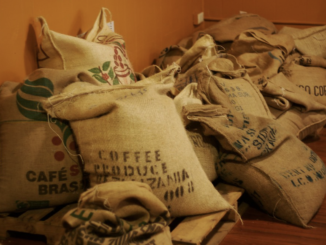August 14, 2024
The evidence of colonial Britain’s attempt to eliminate the Talai a century ago is only now coming to light, as the last of the survivors seek justice.
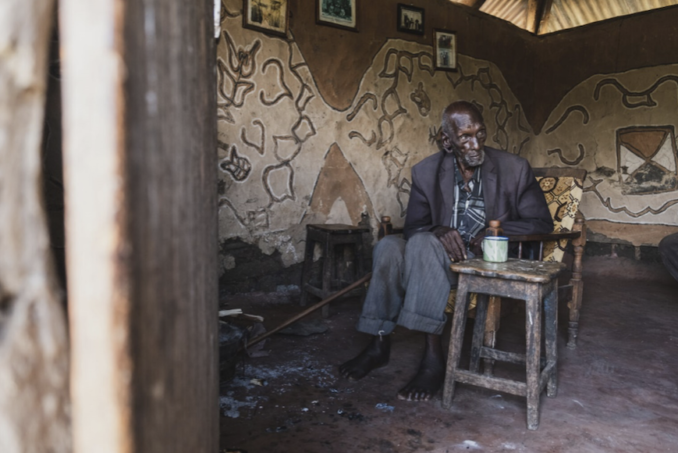
Above: Kibore Cheruiyot Ng’asura, 102 at the time of writing, the last surviving member of the Talai clan deported to the Gwassi Hills in 1934, at his home in Kericho County.
Before 1934, Kibore Cheruiyot Ng’asura’s life was peaceful. As a teenager, he spent most of his time looking after his family’s livestock. He is Kipsigis, the largest subgroup of the Kalenjin who migrated to the Rift Valley in present-day Kenya centuries ago. Ngasura is also a member of the clan that was once the most powerful among the Kipsigis: the Talai.
The Talai became the Kipsigis’ feared spiritual leaders more than 130 years ago, owing to the belief that the clan had supernatural and prophetic abilities allowing them to directly communicate with Asis, the singular creator of all things in the universe. According to Kipsigis oral history, Talai could predict the coming of wars, droughts, or natural disasters, were also medicine men and rainmakers, and crucially, because of their unique reading of omens, could choose the opportune time for Moran to go to war.
The Talai grew rich primarily from tributes from warriors returning from cattle raids. The herds of cattle and goats that stretched for miles down the green pastures near Ng’asura’s family’s village in Ainamoi, an area of Kericho, were enough to keep Ng’asura busy throughout his youthful days.
He never thought much about the Europeans. Four decades earlier, in 1895, they declared present-day Kenya and Uganda a British protectorate. Kenya officially became a British colony in 1920.
“The white people would sometimes come and take pictures of us,” remembers Ng’asura, who is about 103 years old. “They would bring us sweets and we would sing and dance for them. When I was a child, I really liked them.” He pauses, chuckling faintly.
But on this day in 1934, when Ng’asura was about 14, his typically serene and quiet village erupted into chaos. Kipsigis soldiers and tribal police, who worked for the colonial administration, arrived at his ancestral home. The colonial authorities had yet to provide these officers guns, so they all carried spears.
“The soldiers told all the Talai they needed to leave immediately,” recounts Ng’asura, who is one of the last living survivors of those mass expulsions. “If you refused they would beat you ruthlessly. Some of the women were raped. We weren’t given time to collect our belongings.”
From September 1934, hundreds of Talai were rounded up from across Kipsigis territory and transported to a British-controlled detention camp. Months later they would be expelled to the Gwassi Hills, a drought-stricken tsetse fly-ridden area near Lake Victoria that even colonial officials described as not being suitable for human habitation. Many of them would end up dying there, without ever seeing their ancestral lands again.
It was the final move by the British that they hoped would forever break the Talai’s sacred leadership over the Kipsigis, which for decades made it impossible for the colonial authorities to subjugate the tribe.
But 90 years after this fateful day, the Talai and Kipsigis are beginning to heal, reuniting and cleansing themselves of the divisions colonialism had imbued in them. And, now, they want the United Kingdom to pay.
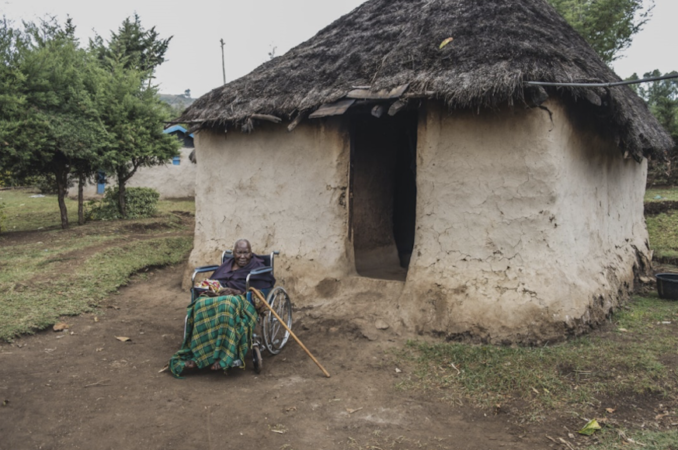
Above: Rosa Koe Ng’asura, wife of Kiboe Cheruyiot Ng’asura (earlier picture) and also 102 years old at the time of writing. Of the 12 children she birthed in the Gwassi Hills, only three survived.
‘Look like white worms’
This calamitous future was prophesied by a Talai elder immediately upon the British reaching the shores of the Indian Ocean and stomping their heavy boots into the lands that would become known as Kenya.
The Talai clan is not originally part of the Kipsigis, but was once the Laibons, or spiritual leaders, of the Maasai tribe, who the Talai had merged with upon their arrival in present-day Kenya. The Talai became leaders of the Nandi, another group of the Kalenjin, sometime in the 19th century, when a prolonged drought and famine caused infighting among Maasai clans and between tribes, according to Daniel Ng’asura Tuei, a Talai historian and Ng’asura’s son, who documented this oral history in his book ‘The Once Powerful Talai Clan: A Trail of Tears’.
As the legend goes, a displaced woman, believed to be the wife of one of the Laibons, and her two twin sons – Kobogoi and Barsabotwo – sought refuge in a cave in Nandi territory. Nandi warriors invited this woman and her young sons into the tribe after witnessing their inexplicable relationship with a group of lions, who dutifully protected them and took turns killing wild animals, dragging their limp bodies to the entrance of the cave, and feeding them.
The Nandi warriors began to refer to these twin boys as “Talai”, meaning “the one who is humble” in Kalenjin, owing to their ability to transform a fierce wild animal into a gentle and obedient companion. All members of the Talai clan are descendants of these twin boys.
Soon enough, the Nandi witnessed Kobogoi create water seemingly out of thin air during the drought. Shocked, they recognised the twins’ supernatural abilities and made Kobogoi the Nandi’s first Talai Orkoiyot, or the community’s supreme spiritual leader.

Above: Talai historian David Ng’asura Tuei and his wife, Viola at their home in Kericho County. Over the past 25 years, he has painstakingly built an oral history of the Talai.
According to Tuei, the Talai historian, Kobogoi’s leadership then passed to his grandson, Kimnyole arap Turukat, who is Ng’asura’s great-grandfather. In the late 19th century, Kimnyole called a meeting with his four sons and the leaders of the neighbouring Kalenjin tribes, including the Kipsigis. He had recently caught wind that a group of Nandi, who blamed him for another drought and an epidemic – possibly smallpox – was planning to assassinate him and replace him with one of his sons.
It was a meeting that would inscribe the Talai’s unfortunate fate onto the universe. In preparation, Kimnyole requested that one of his wives fill a teret – a large, rounded traditional clay pot – with boiled water and maiyuek, traditional beer fermented from maize. Kimnyole also added a bull’s tongue, pierced with thorns.
When the guests arrived, they each grabbed a long straw from the pot and consumed the traditional drink, according to Tuei. After some time passed, Turukat asked each of his sons to look inside the pot and describe what they could see.
Kimnyole’s three eldest sons peered inside, but no vision appeared to them. It was then Koitalel arap Samoei’s turn, the youngest of Kimnyole’s sons who was in his 20s at the time.
“What do you see?” Kimnyole asked Koitalel. He squinted his eyes, moving his face closer to the liquid inside – until an image finally appeared to him.
“I see people,” replied Koitalel. “But they have white skin; they look like white worms. And they have smoke coming from their mouths.” At this moment, Kimnyole knew it was this son whom his conspirators would replace him with as the leader of the Nandi.
“Those people you are seeing have just arrived in the eastern waters,” Kimnyole told Koitalel, indicating the Europeans’ arrival at the port city of Mombasa, along the Indian Ocean.
“They will bring with them something that looks like an iron serpent. It puffs at the head and it will crawl across the earth,” he intoned, referring to the Kenya-Uganda railway that the British began constructing from Mombasa in 1896. It would eventually snake across the land, terminating in Kisumu in 1901, on the eastern shore of Lake Victoria, running 1,060 kilometres in length.
“They will steal your cattle and all of your land,” Kimnyole continued.
Kimnyole then turned to his son Koitalel, looking directly into his startled face, and said: “And these people will be the ones who will kill you, Koitalel.” Kimnyole instructed all the attendants to eat pieces of the boiled bull’s tongue, as he vowed never to bless the Nandi with the Talai’s sacred leadership again.
Kimnyole ordered that after his death, Koitalel was to relocate to the territory of the Keiyo, another subgroup of the Kalenjin, and his other two sons to Kipsigis country, where Kipchomber arap Koilegen, Kimnyole’s eldest son and Ng’asura’s grandfather, would become the orkoiyot, explains Tuei.
Around 1890, Kimnyole was assassinated by the Nandi, clubbed to death and left to be eaten by hyenas for failing to prevent the infestation of rinderpest and failing to warn the warriors about raids from neighbouring communities, according to Tuei. Koitalel, who disobeyed his father’s orders to migrate to Keiyo territory, rose to be the orkoiyot of the Nandi, while his brothers were driven out ending up in Kipsigis territory.
A few years later, the iron snake finally slithered its way into Nandi and Kipsigis territory. Their warriors responded by organizing deadly attacks along the railway line, armed with spears and arrows. They were led by Koitalel and Koilegen, respectively.
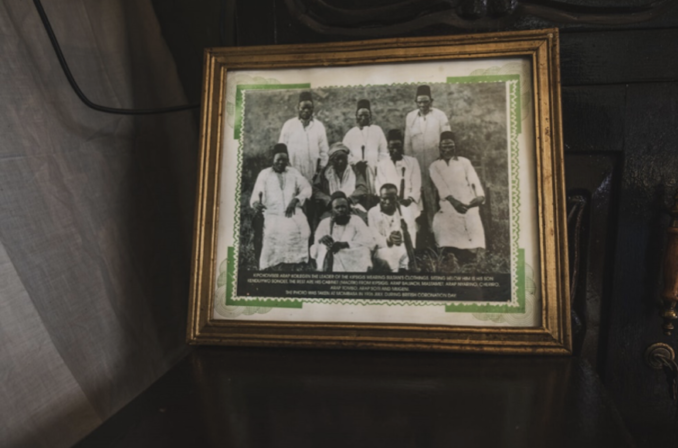
Above: Framed photograph of Kipchomber arap Koilegen, the first Kipsigis orkoiyiot (1894 – 1914) and his advisors, in Mombasa in 1906 attending King Edward VII’s birthday. They are dressed in Omani traditional attire. A year earlier, the British had recognised arap Koilegen as the sole executive authority of the Kipsigis.
In 1902, the British and Kipsigis made a peace settlement, which recognised Koilegen as the paramount chief of the Kipsigis. But, in 1905, the final warning of Kimnyole’s prophecy was fulfilled: Koitalel was shot and killed by Richard Meinertzhagen, a British intelligence officer, when he similarly invited Koitalel to negotiate a truce.
Meinertzhagen decapitated Koitalel, leaving his body, but taking his severed head, along with several of his possessions, to the United Kingdom. For decades now, the Nandi have been demanding the return of Koitalel’s skull, believed to still be in the UK.
‘Like a royal family’

Above: Photos of Kipchomber arap Koilegen in his grandson, Ng’asura’s house.
“Koilegen was like the king of the Kipsigis,” says Ng’asura, who is Koilegen’s grandson. His eyes are sunken in and his body is frail; he cannot walk without the support of two men, who wrap Ng’asura’s arms around their shoulders and slowly guide him inside his home in the rural area of Kipkelion in Kericho County, where he currently resides.
A caretaker pours Ng’asura a warm glass of milk, as he slowly leans forward on a wooden chair to balance the cup between both his hands. Milk is the only food Ng’asura has managed to keep down over the last few months. He finally reclines his body back in the chair, making himself comfortable.
“The Kipsigis really respected the Talai,” Ng’asura continues. “We were like a royal family. All the Kipsigis women wanted to marry a Talai man, because it would make them into the status of queens.” Koilegen had 16 wives during his lifetime.
One of the only pictures hanging on the brown walls of Ng’asura’s home is an old black and white framed photograph of Koilegen and his advisors dressed in traditional Omani clothing, taken during a 1906 trip to Mombasa, which at the time was still controlled by the Sultan of Zanzibar.
A year before, in 1905, following the murder of Koitalel in Nandi, the British recognised Koilegen as the sole executive authority among the Kipsigis. Before this Koilegen, along with the rest of the orkoiik, were considered priests and not chiefs.
Koilegen was invited there to attend a celebration of Edward VII, the then king of the United Kingdom. At the event, he was approached by British administrative officers. “They told Koilegen that the [Europeans] wanted part of the Kipsigis land to settle there,” Ng’asura says. “And they wanted the Kipsigis to be relocated to Tanganyika [present-day Tanzania].”
“Koilegen returned and held a meeting with all the Kipsigis,” Ng’asura explains. “He told them that he had come from the eastern waters and met with the [white people]. And what his father [Kimnyole] warned him about is coming to pass. They want to relocate us to Tanganyika and steal our lands.”
The Kipsigis, therefore, needed to resume and strengthen their resistance, Koilegen ordered. Koilegen began organising a mass revolt. Many of the Kipsigis who the British appointed to be colonial headmen and chiefs, and were expected to be collaborators, were still deeply loyal to Koilegen and the Talai leadership, making it easy for Koilegen to sabotage the British.
But in 1914, just before the outbreak of WWI, the British issued a detention order against Koilegen. The order emanated from the office of the chief secretary in Nairobi and was signed by the Governor. It stated that Koilegen has “heretofore conducted himself so as to be dangerous to peace and good order in the Protectorate.”
Koilegen would be relocated to a prison facility in Fort Hall, now Murang’a County in the traditional territory of the Kikuyu in central Kenya, where he was to be held as a “politically detained native.” He would be imprisoned there until his death in 1916.
Koilegen’s leadership blessings were passed to his son, Kiboin Arap Sitonik, still described by elders as the “last great prophet” of the Talai. According to Tuei, Sitonik, who is Ng’asura’s uncle, continued organising for a mass uprising, instructing Kipsigis warriors to ransack the homes of British settlers and deliver their guns to him and his seven brothers, who were also part of the Talai leadership. They included Ng’asura Arap Chomber – Ng’asura’s father and Tuei’s grandfather.
Colonial authorities attempted to break the Talai’s leadership over the Kipsigis in any way they could. In 1933, the British sentenced Sitonik to eight years in prison; his brothers were similarly imprisoned.
Ng’asura tells me the colonial authorities did not find any weapons on his father, Chomber. But he was still arrested and imprisoned for six months over accepting cattle as gifts from other Kipsigis, who asked him to pray for rain. The colonial officers accused him of cheating the Kipsigis people through claims of “witchcraft,” Ng’asura says.
In an act that would haunt the Kipsigis for decades to come, the British convinced 10 Kipsigis representatives, some of whom were converted Christian chiefs, elders, and headmen, to take an oath in front of the detained Talai leadership – including Sitonik and Chomber – hoping to break their sacred bond once and for all. The Kipsigis leaders declared that they wished to separate from the Talai. According to Ng’asura, this involved them drinking water from a human skull.
When the skull was passed to the Talai, who the British expected to respond by similarly cutting their bond with the Kipsigis, they instead refused to touch the skull and promised to never denounce the Kipsigis, as they were “our people, our mothers, sisters, and our daughters.”
In February 1934, Douglas Brumage, the Kericho DC, sent a letter to the Provincial Commissioner of the Nyanza province in western Kenya near Lake Victoria. “The government of the [Talai] is very efficient, more efficient than ours has been,” Brumage wrote. “And it is extraordinary how they have dovetailed it in with our administration,” he continued, noting that many of “our tribal police and native office staff” continue to be “under the influence” of the Talai.
He warned: “If nothing is done to these people in four months to come, then, I don’t see ourselves ruling in this part of the colony.”
In June 1934, a group of Kipsigis men raided a European-owned farm in the Kinangop area of the Naivasha district, which was owned by Alex and Stella Semini, a settler couple. Planning to steal money, firearms, and ammunition, a commotion broke out when the couple awoke from their sleep. Alex Semini was speared and beaten and later succumbed to his wounds. Stella was assaulted and raped. Several Kipsigis men were later arrested and charged with murder.
With the Talai being blamed for giving the order to rob settler homes, outraged colonial officials led a crackdown on the clan. In September 1934, the “[Talai] Removal Ordinance” was passed into UK law, permitting colonial authorities to expel the Talai en masse from the Kipsigis territory, identifying them as an “evil influence on the whole population.”
The Talai would be exiled to the Lambwe Valley in Gwassi, a harsh and arid environment. This massive area located in Nyanza province lay within the Luo people’s traditional territory. The area was infested with malaria-carrying mosquitos, tsetse flies, poisonous snakes and crocodiles. Sleeping sickness was rampant.
The ordinance to relocate the Talai underwent intense debate in the UK’s Legislative Council, where some British parliamentarians warned that sending the Talai to Gwassi would be a certain death sentence. One described Gwassi as a “valley of death,” where 30 years earlier 60 percent of residents in Lambwe valley had been killed by diseases.
The Move
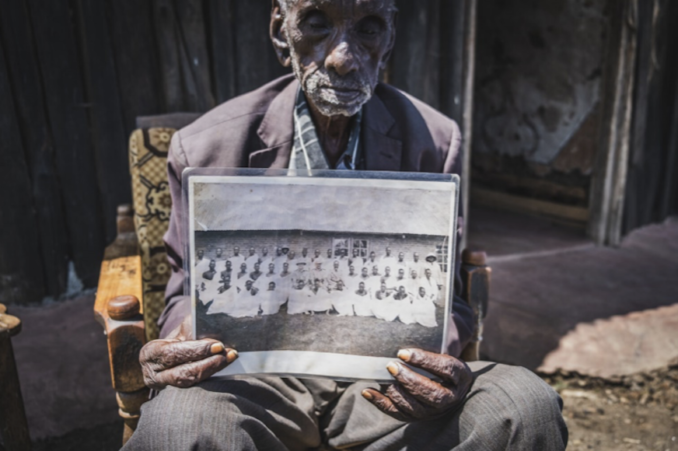
Above: Kibore Cheruiyot Ng’asura was among 45 Talai youths allowed by the colonial authorities to return to Kericho to find wives in 1945. They would be imprisoned in a detention center, fenced in by barbed wire, while in Kericho.
“Everyone was too scared to resist,” says Ng’asura, resuming his narration of the 1934 mass expulsions.
As screams travelled across Kipsigis territory, some Kipsigis desperately attempted to save their Talai relatives and neighbours from the soldiers. They hid the Talai in their homes and even adopted them into their non-Talai clans to protect them. To this day, there are Talai who still claim to be from other clans and families, hiding their real identities since 1934.
Nearly 700 Talai, including 308 children – the clan’s entire population at the time, minus those who successfully hid from colonial officials – were detained and transported to an open-air detention camp in Kiptere, about 25 kilometres from Kericho town, where they stayed for several months.
“When we arrived they registered all of us and took our fingerprints,” Ng’asura remembers. “The women used to sleep in houses grouped together according to their families. Every night the [Kipsigis tribal police] would rape the women, going from house to house.”
The brutality of the tribal police meant that the unarmed Talai men were powerless to stop them; eventually the women would stop screaming for help, as assistance never came. “These soldiers were the most despised members of the Kipsigis; they could be merciless to us,” Ng’asura says. “They wanted the Talai gone so they could trick our people into believing they were their true leaders.”
Months later, escorted by armed British soldiers and tribal police, the Talai began the long trek to Gwassi; it took 14 days. They walked for about 24 kilometers each day and camped during the nights, recounts Ng’asura.
Once they reached Gwassi, they were shocked by the extreme dryness of the area. Already naturally arid, Gwassi at that time was also experiencing a prolonged drought. “There was no grass,” says Ng’asura, his old, tired eyes peering at the wall in front of him. “The ground was like dust. But my father had very special powers that could bring rain.”
Despite having already been detained over praying for rain back in Kipsigis territory, Ng’asura’s father, Chomber risked the ire of colonial soldiers by carrying out traditional prayers. The ritual includes pouring milk and millet on the ground as he prays, his palms outstretched and facing east, requesting that Asis deliver them rain.
According to Ng’asura, the rains came. And then continued to come, causing floods. Soon, a lightning storm brewed. “The rains fell everywhere, covering the ground in water,” Ng’asura recounts. “They flooded all the tents and swept them away. People became scared for their lives.” The British soldiers were dumbfounded.
“One of the white officers knew about my father’s powers,” Ng’asura says. “He begged my father to stop the rain. He told him that some of us have no problems with the Talai and they were only following orders.” Chomber, seeing the panic that had spread, prayed to Asis to discontinue the rains.
The rains stopped.
To be continued…
Reproduced with permission.
Text and images © Jaclynn Ashly 2024
AW Kamau 2024


